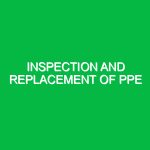In industries where chemicals are handled, the importance of Personal Protective Equipment (PPE) cannot be overstated. PPE for chemical handling comprises a variety of protective gear designed to safeguard workers from potential hazards associated with chemicals. These hazards can range from mild irritants to highly toxic substances, making the right protective measures essential for maintaining health, safety, and environmental standards. In this article, we will delve into the types of PPE for chemical handling, the associated risks, safety precautions, and relevant regulations that govern their use.
The Crucial Role of PPE in Chemical Handling
PPE serves as the last line of defense against chemical exposure. It is vital not only for safeguarding the health of individual workers but also for promoting a culture of safety within organizations. Industries such as manufacturing, pharmaceuticals, agriculture, and waste management regularly encounter hazardous chemicals. In these environments, implementing appropriate PPE can significantly reduce the risk of injury and illness.
From my experience working in a chemical manufacturing plant, I witnessed firsthand the critical role PPE played during a safety incident involving an unintentional chemical spill. The quick response of workers equipped with the correct gear helped mitigate the effects of the spill, illustrating the importance of preparedness and adherence to safety protocols. Such incidents highlight that PPE is not merely a regulatory requirement but a fundamental aspect of workplace safety.
Identifying Hazards and Risks Associated with Chemical Handling
Before we can effectively discuss PPE for chemical handling, it’s essential to identify the potential hazards that workers may encounter. These hazards can be broadly categorized into several types:
1. Chemical Exposure
Chemical exposure can occur through skin contact, inhalation, or ingestion. Many chemicals can cause immediate harm, such as burns or respiratory distress, while others may lead to long-term health issues, including cancer or organ damage. For example, solvents like benzene are known carcinogens, necessitating stringent protective measures.
2. Fire and Explosion Risks
Many chemicals are flammable or explosive under certain conditions. The danger of fires or explosions can escalate rapidly if proper precautions are not taken. Consider the case of a laboratory explosion caused by a reaction between incompatible chemicals—a stark reminder of the need for proper PPE and handling protocols.
3. Physical Hazards
In addition to chemical risks, physical hazards such as slips, trips, and falls may arise in environments where chemicals are handled. Spilled substances can create slippery surfaces, increasing the likelihood of accidents. PPE must, therefore, also address these physical risks.
4. Biological Hazards
In certain sectors, chemicals may be contaminated with biological agents. For instance, agricultural chemicals might carry pathogens that pose risks to human health. In such scenarios, PPE must protect against both chemical and biological hazards.
Safety Precautions and Best Practices for PPE in Chemical Handling
To effectively mitigate risks associated with chemical handling, implementing safety precautions and best practices is paramount. Here are some actionable steps to consider:
1. Conduct Regular Risk Assessments
Before any work begins, a comprehensive risk assessment should be conducted. This assessment helps identify specific hazards present in the workplace and determines the appropriate PPE required. Engaging workers in this process can provide valuable insights and foster a culture of safety.
2. Select Appropriate PPE
When choosing PPE for chemical handling, consider the type of chemicals involved, their concentrations, and the tasks performed. Common types of PPE include:
- Gloves: Chemical-resistant gloves made from materials like nitrile or neoprene are essential to protect the skin.
- Protective Clothing: Coveralls or aprons made from chemical-resistant materials help shield against spills and splashes.
- Eye Protection: Safety goggles or face shields protect against chemical splashes and fumes.
- Respiratory Protection: Depending on the chemicals, respirators or masks may be necessary to prevent inhalation of harmful vapors.
- Foot Protection: Steel-toed boots with chemical-resistant soles provide protection against spills and heavy objects.
3. Regular Training and Drills
Ongoing training is crucial for ensuring that workers understand how to use PPE effectively. Regular drills, such as emergency response simulations, can help reinforce proper usage and familiarize employees with equipment. Personal anecdotes from seasoned workers can also enhance training sessions by sharing lessons learned from past incidents.
4. Maintenance and Inspection of PPE
PPE must be regularly inspected and maintained to ensure it remains effective. Workers should be trained to recognize signs of wear or damage and know when to replace their equipment. For instance, a colleague of mine once overlooked a small tear in his gloves, leading to an unfortunate exposure incident. This experience highlighted the significance of routine checks.
5. Promote a Culture of Safety
Encouraging open dialogue about safety concerns among employees fosters a culture of responsibility. Workers should feel empowered to report hazards or suggest improvements regarding PPE and safety practices. This collaborative approach can lead to more effective safety measures and a safer work environment.
Regulations and Standards Governing PPE for Chemical Handling
The use of PPE for chemical handling is governed by various regulations and standards designed to protect workers. Understanding these regulations is essential for compliance and ensuring safety. Some key standards include:
1. OSHA Regulations
The Occupational Safety and Health Administration (OSHA) sets forth regulations regarding PPE in the workplace. Employers are required to assess hazards and provide appropriate PPE to employees, as stated in OSHA‘s PPE standard (29 CFR 1910.132). Regular inspections and maintenance of PPE are also mandated under these regulations.
2. ANSI Standards
The American National Standards Institute (ANSI) provides guidelines for the design and performance of PPE. ANSI standards help ensure that PPE meets specific criteria for protection against various hazards. For example, ANSI/ISEA 105 outlines testing methods for evaluating the cut resistance of gloves.
3. ASTM Standards
The American Society for Testing and Materials (ASTM) develops standards for the performance of PPE materials. Compliance with ASTM standards ensures that PPE can withstand the conditions it is designed for, such as chemical exposure and physical wear.
Conclusion: The Imperative of PPE for Chemical Handling
PPE for chemical handling is not merely an accessory; it is an essential component of workplace safety. By understanding the hazards associated with chemical handling and implementing appropriate protective measures, organizations can significantly reduce the risk of injury and illness. From selecting the right gear to fostering a culture of safety, every step counts in safeguarding the health and well-being of workers. As industries continue to evolve, staying informed about PPE advancements and regulatory changes will be crucial in maintaining safe working environments.
Ultimately, a commitment to safety is a commitment to people. In the world of chemical handling, where risks abound, the right PPE can make all the difference. Let’s prioritize safety and ensure that every worker returns home safe and sound.


